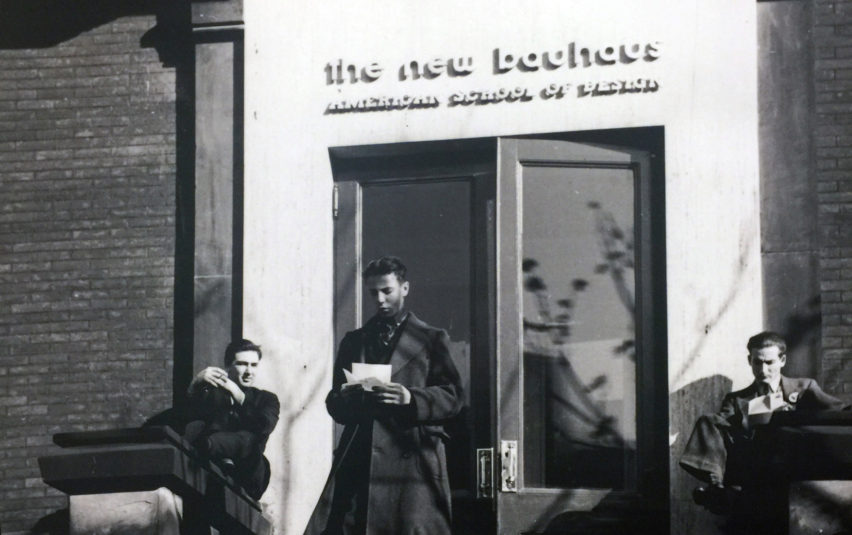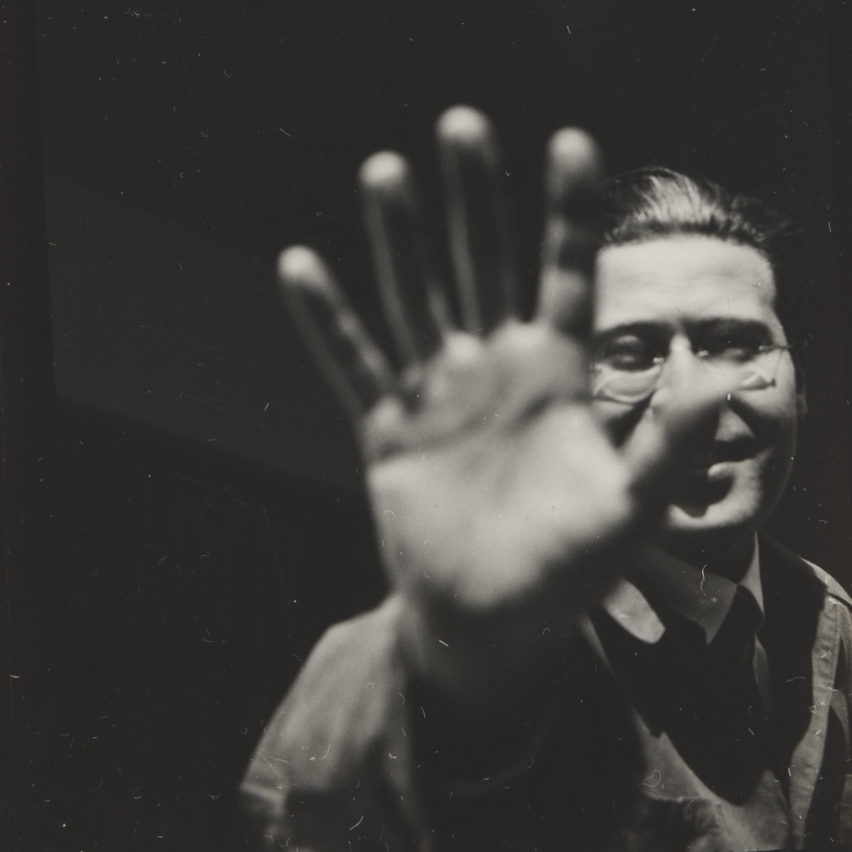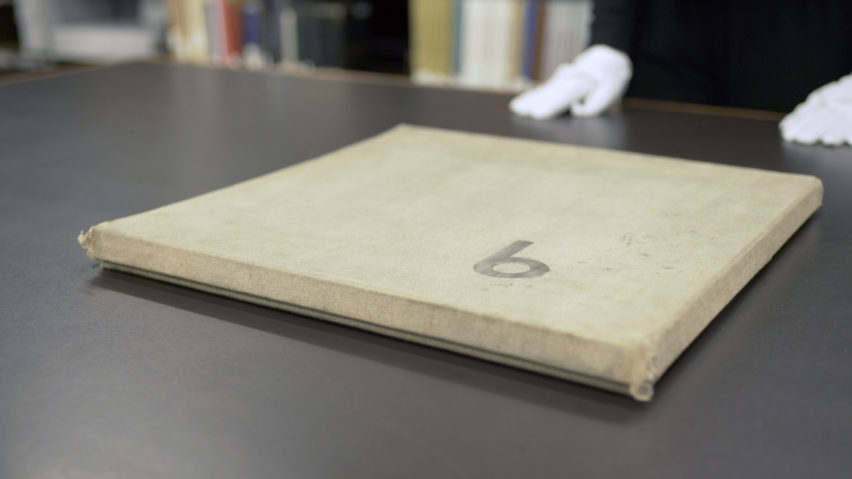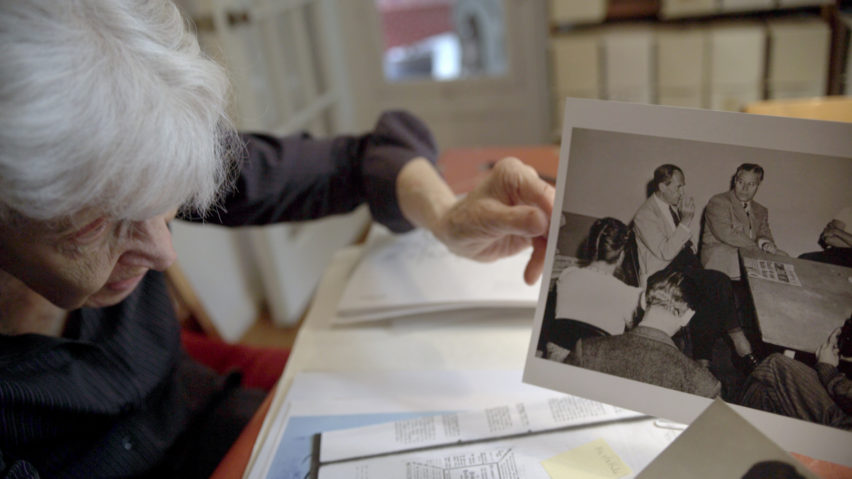
Bauhaus educator László Moholy-Nagy was "not given his due"
Hungarian-born Bauhaus educator László Moholy-Nagy is set to feature in a new movie, highlighting the role he played in bringing the school's ideology to America. For our Bauhaus 100 series, the film's director Alysa Nahmias speaks to Dezeen.
Moholy-Nagy is often overshadowed by Bauhaus stars like Walter Gropius and Ludwig Mies van der Rohe, yet he played a critical role in continuing the school's teachings after it was shut down in 1933. The New Bauhaus documentary aims to draw attention to his legacy.
"Moholy was instrumental in many aspects of Bauhaus education and a giant of 20th-century art and design. But somehow I think not given his due and he is not as well known as some of his fellow Bauhaus luminaires. We hope that this film can play a part in shifting focus onto him," Nahmias told Dezeen.

Two years in production and set to release in 2019, the film is produced by former architect Nahmias and cinematographer Petter Ringbom, in collaboration with Erin Wright and Marquise Stillwell.
It focuses on Moholy-Nagy's time in Chicago, where he established the New Bauhaus design school, and will explore his personal history and formative ideas.
"Moholy should be more widely recognized, like Gropius and Mies"
"One of Moholy's ideas is that the person is above the product, that as we are creating artwork, design and products, we are also creating ourselves, both on the individual level and as a collective society," said Nahmias. "This is one of the ideas that I want to explore in this film, that makes it go way beyond being about design or art."
Following retrospectives of Moholy-Nagy's work at major museums like the Guggenheim in 2016, and the Art Institute of Chicago and the LACMA in 2017, the film offers a closer look and emotional journey through his life, exploring his work as an artist, designer, visionary, and teacher.
"We saw the exhibitions and thought his work was incredible. We wondered why we had not learned more about Moholy when we were studying art and design in college," she said.
"We got a sense that there had to be an untold story there, and that more people in the design world and beyond should have a chance to appreciate Moholy's work, like that of Gropius, Mies, or other great 20th century designers and artists."
Moholy-Nagy taught at the Bauhaus from 1923 to 1928
Born László Weisz to a Jewish family in rural Hungary, the artist changed his surname to Moholy-Nagy, switching from his German-Jewish surname to the Magyar surname of his mother's lawyer friend Nagy, who supported the family when László's father left. He then added Moholy after the town of Mohol, in present-day in Serbia, where he spent his childhood.
He was an educator at the Bauhaus from 1923 until 1928, becoming head of the metal workshop. This programme marked the school's move towards its original focus of being a design and industrial institute. Following the Bauhaus, Moholy-Nagy established his own design studio in Berlin before fleeing the Nazi regime in 1935.
After briefly living in London, in 1937 he was invited by the Association of Arts and Industries to become the director of the New Bauhaus school in Chicago.

"The Association of Arts and Industries was a group of wealthy industrialists based in Chicago, and they wanted to start a school 'along Bauhaus lines' – that was actually what they wrote on the telegram inviting Moholy to Chicago," Nahmias said.
"They knew about Gropius, who was by that time employed at Harvard, and he recommended they get in touch with his friend László."
Moholy-Nagy opened New Bauhaus school in Chicago
In 1939, Moholy-Nagy opened the New Bauhaus school, but after a year of running, the majority of businessmen at the Association of Arts and Industries pulled their money out, causing the school to close.
"After that first year, I think the association realised that Moholy was doing something that was very much along Bauhaus lines, but wasn't necessarily productive in their limited definition of what the school would produce in its students," explained Nahmias.
"Moholy aimed for his school's graduates to be influential in design and industry, but in the early assignments, they were making photograms and wood sculptures, and they were doing all of these Bauhaus experimentations."
Moholy faced a choice at that moment, where he could either let that go and look for a job somewhere. But he instead decided to keep going with his dream and vision. Industrialist Walter Paepcke, chairman of the Container Corporation of America, collaborated with Moholy-Nagy to underwrite another iteration of the school, which would be called the School of Design.
"It was a very entrepreneurial act"
"Moholy reopened the school by himself and re-named it The School of Design, so rather than it being run by the Association of Arts and Industries, it ended being his own school. It was a very entrepreneurial act, which he did as an immigrant during his second year in America," explained Nahmias.
"It was a constant struggle for Moholy to keep the school open and running. He often didn't take a salary and often worked other jobs. He was constantly fundraising with his patron and friend, Walter Paepcke, in Chicago and beyond, to keep the school alive."

This School of Design, formerly the New Bauhaus, became the Institute of Design (ID) in 1944. In 1949, ID became part of Illinois Institute of Technology, where it remains alive today. After many iterations, the New Bauhaus is still in practice today, honouring the curriculum of the original Bauhaus school.
"The New Bauhaus definitely didn't fail, but rather has been re-invented time and again," said Nahmias.
Moholy passed away of leukaemia in 1946, and was succeeded by Russian-born British architect and industrial designer Serge Chermayeff as dean. He is the father of prolific graphic designer Ivan Chermayeff of Chermayeff & Geismar & Haviv, who passed in December 2017.
Moholy's legacy lives on in Chicago to this day, but Nahmias hopes the film will make his work known by a larger audience.
"We often see architecture films that are hagiographies – like a biography of a saint – and it is so worshipping that you are not getting at the heart of what this person went through, and what motivated their work," Nahmias said. "I think for all of these artists, designers and architect, there are stories."
Moholy's daughter offers "unique perspective" in the film
A key feature of the documentary is an interview with Moholy's daughter, Hattula, from his second wife Sibyl, an architectural and art historian from Germany. Hattula manages the estate of the artist with the Moholy-Nagy Foundation, which she founded in 2003. She is 85 and lives in Ann Arbor, Michigan.
"This was one of the happy discoveries, that not only was she [Hattula] willing to give us access and facilitate the project, but she was willing to be filmed and really be part of it, which I think is a unique perspective on a Bauhaus artist," said Nahmias.
Advisors on the documentary include MoMA curator Barry Bergdoll, curator Ellen Lupton of Cooper Hewitt Design Museum, curator Elizabeth Siegel at the Art Institute of Chicago, Princeton professor Hal Foster, author Thomas Dyja, and architects Sharon Johnston and Mark Lee.

The Bauhaus is the most influential art and design school in history. To mark the centenary of the school's founding, we've created a series of articles exploring the school's key figures and projects.
See the full Bauhaus 100 series ›